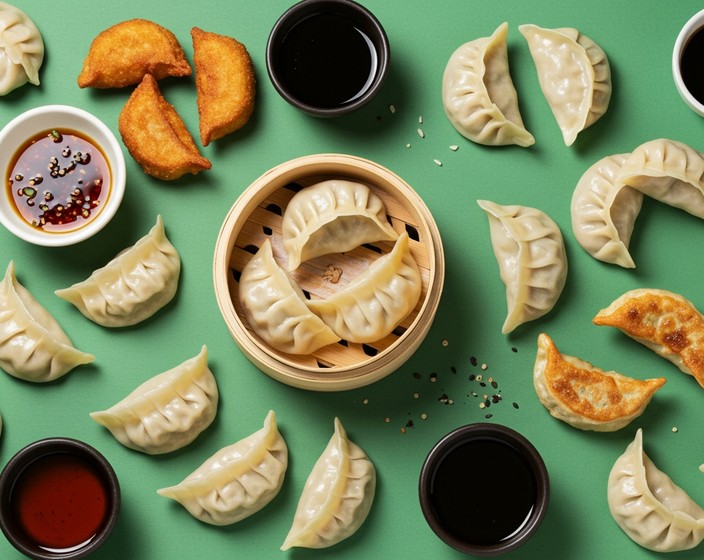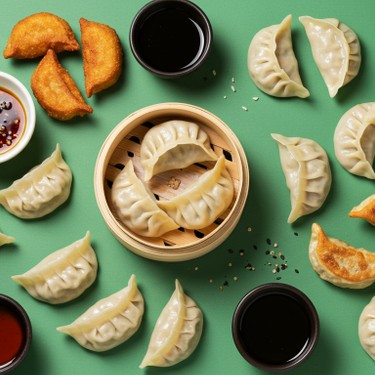Dumplings, Reinvented: 14 Cooking Methods Beyond Boiling and Steaming




Dumplings are one of the most versatile foods out there, and the way you cook them can totally change their texture and flavor. Whether you love them crispy, tender, or melt-in-your-mouth soft, there’s a cooking method for you.
Think dumplings only get cozy in a steamer or hot tub of boiling water? Think beyond the steamer—this guide is your golden ticket to dumpling deliciousness. We’re taking these little flavor pillows on a wild ride—grilled, air-fried, deep-fried, even smoked (yes, smoked dumplings are a thing).
Whether you like yours chewy, crispy, or comfortingly soft, there’s a method here to match your mood. And if you’re still deciding which dumpling deserves a spot in your skillet, check out our Ultimate Guide to 18 Must-Try Dumplings from Around the World for flavor-packed inspiration.
But first—let’s find your perfect cooking style. Grab your chopsticks (or your fingers—we won’t judge), and let’s turn up the heat on dumpling night!
If you’re in the mood for dumplings that are super tender and soak up all those savory flavors, slow-cooking them is a must-try. This works best for dumplings that are served in soups or stews, like Chinese wontons or Polish pierogi.
How to Do It
Boiling is the most traditional way to cook dumplings, especially for jiaozi (Chinese dumplings), pierogi, and wontons. It gives them a soft, juicy texture and ensures the filling is perfectly cooked.
How to Do It:
Tip: If you’re cooking frozen dumplings, don’t thaw them—just increase the boiling time by a few minutes.
Smoking dumplings adds a unique, rich flavor, especially for heartier fillings like pork or beef.
How to Do It:
Steaming is ideal for delicate dumplings like xiao long bao (soup dumplings) and har gow (shrimp dumplings) since it keeps them tender while locking in all the juicy goodness.
How to Do It:
Tip: If using a metal steamer, lightly grease the surface to prevent sticking.
If you love the crispy texture of frying but want to keep things a bit healthier, the air fryer is your best friend. You’ll get that perfect crunch without all the oil. Air-fried dumplings come out crispy, and they’re great for things like gyoza or wontons.
How to Do It:
Pan-frying dumplings is like giving them a crispy golden halo. The bottom gets beautifully browned and crispy, while the inside stays soft and juicy. You’ll often see this technique used for gyoza (Japanese dumplings) or potstickers.
How to Do It:
Tip: Avoid burned dumplings, always use medium heat, and a splash of water.
Broiling gives dumplings a crispy, slightly charred top while keeping the bottom tender. It’s a great alternative if you don’t want to deep-fry.
How to Do It:
If you’re looking for a serious crunch, deep-frying is where it’s at. The dumplings turn golden brown and crispy all over, creating an irresistible contrast with their soft, flavorful filling. This is a great option for dumplings like samosas (Indian dumplings) or empanadas (Latin American dumplings).
How to Do It:
Using an Instant Pot or pressure cooker speeds up the cooking process while infusing dumplings with intense flavor.
How to Do It:
If you want to skip the frying and keep things a little lighter, try baking your dumplings. They come out crispy and golden without the oil, and it's perfect for empanadas, pierogi, or even ravioli.
How to Do It:
Grilling dumplings? Yep, it’s a thing! Grilled dumplings get a smoky flavor that pairs well with the charred edges, making them a perfect option for Chinese baozi or mandu (Korean dumplings).
How to Do It:
Sautéing is a quick and flavorful way to cook dumplings, especially if you’ve got fillings like vegetables, shrimp, or ground meat. The high heat helps seal in the filling while giving the dumplings a nice, crispy edge.
How to Do It:
Sous vide is an unconventional way to cook dumplings, but it ensures an even cook while keeping them juicy. It's great for dumplings with delicate wrappers that might break in boiling water.
How to Do It:
Poaching is similar to boiling but uses lower temperatures to keep dumplings tender and prevent them from bursting. This method is great for delicate dumplings like Chinese wontons or Georgian khinkali.
How to Do It: